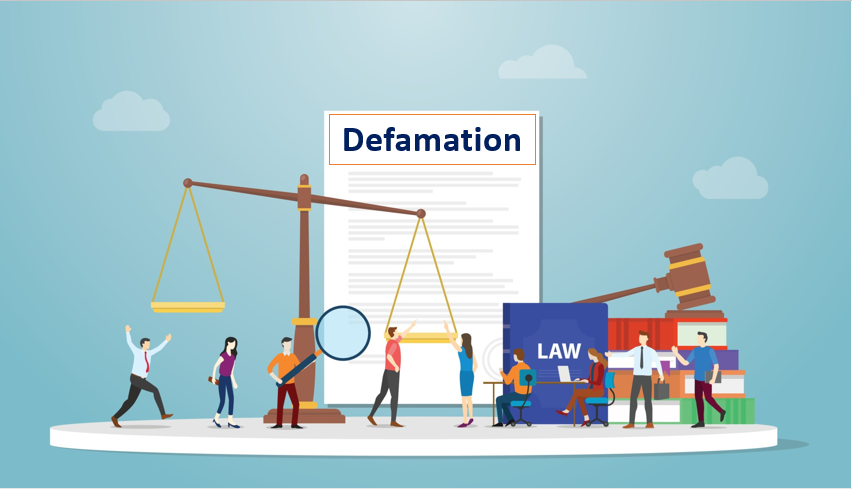Published On: 14th October, 2024
Authored by: Mushq Khan
Hamdard Institute of Legal Studies and Research, Jamia Hamdard
“Human greed doesn’t stop at just mining on land. It goes further, diving into the sea, plundering its riches, leaving no treasure untouched, without thinking about the consequences.”
The Paris Agreement aims to limit global warming to 1.5°C above pre-industrial levels, requiring a significant reduction in emissions by 2030 and achieving net-zero emissions by 2050.[1]
One of the biggest producers of Green House Gases is road transportation which alone contributes to 75% of all emissions.[2] To combat this, there is a growing shift towards electric vehicles (EVs), which offer a promising solution to significantly reduce emissions in this sector. However, the International Energy Agency (IEA) warns of a shortage in minerals essential for EV batteries, with demand projected to surge by 30 times from 2020 to 2040.[3]
The push to reduce carbon emissions has resulted in a heightened demand for minerals and metals essential for the energy sector. This, in turn, has sparked renewed interest in exploring mineral resources situated on the seabed.
What is Deep-sea Mining and what are the mechanism for its regulation?
Deep-sea mining involves the retrieval of mineral deposits containing metals such as copper, cobalt, nickel, lithium, silver, and rare earth metals from the ocean floor below 200 meters.[4]. Although the commercial extraction has not begun it lies in three categories of marine mineral deposits:
- Cobalt-rich Crusts: They contain metals such as iron, manganese, nickel, cobalt, copper, and rare earth elements.
- Seabed Massive Sulphides : They are rich in copper, iron, zinc, silver, and gold.
- Polymetallic Nodules: currently the main focus of deep-sea mining, are potato-sized formations formed over millions of years. These nodules contain manganese, iron, copper, nickel, cobalt, lead, zinc, and trace amounts of other metals like molybdenum, lithium, titanium, and niobium..
The fear of unregulated seabed mining has prompted discussions on the rights to mine the seabed and the conditions under which it should be done. The International Seabed Authority (ISA), established under UNCLOS and its Implementation Agreement, is tasked with regulating deep-sea mining in the international seabed, known as ‘the Area’. With 167 member states and the EU, the ISA oversees seabed minerals on behalf of “mankind as a whole” and holds exclusive authority to issue exploration and exploitation contracts in this region. Additionally, the ISA is mandated to ensure effective protection of the marine environment from potential harms caused by deep-seabed activities.[5]
According to UNCLOS, all seabed mineral exploration or exploitation within the Area must be done through contracts with the International Seabed Authority (ISA), adhering to its rules. Three entities can undertake activities in the Area: State parties, State enterprises, or entities with the nationality of State parties. State sponsorship is required for state enterprises or private actors to apply for contracts.
The Privatization of Ocean Resources and the Price of Progress
The Clarion Clipperton Zone (CCZ)which is located in the Pacific Ocean between Hawaii and Mexico, is the specific target for seabed mining activities. This area borders the Exclusive Economic Zones of the Cook Islands, Kiribati, Nauru, and Tonga. Of the 31 contracts awarded by the ISA, 16 have been granted to deep-sea mining contractors for exploration in this region.
Under UNCLOS, “reserved areas” are designated for mining activities by developing states to ensure equitable access to the international seabed. However, companies from the Global North have gained access to sites within these areas by using local companies in small island developing nations to secure sponsorship.
The Metals Company, a Canadian-registered entity, has obtained exploration rights to over half of the area reserved for developing states in the Clarion Clipperton Zone (CCZ) in the Pacific Ocean. They achieved this by establishing wholly owned subsidiaries in Tonga, Nauru, and Kiribati to meet sponsorship requirements. The Metals Company anticipates profits exceeding $30 billion over the 30-year mining project duration.
The collaboration between small countries and foreign companies in deep-sea mining raises questions about the benefits for the small nations involved. Since Small Island Developing Countries lack the necessary technology and resources for the process, this opens the door to opportunities for foreign companies These companies promises that it will provide a source of new income to small island nations through profits from state-owned mining companies and taxes on private mining companies. However, the benefits are exaggerated. Since the mining contracts are held by foreign companies, this means that states may face major risks without gaining many benefits.
An example of such collaboration is the case of Papua New Guinea granting Nautilus Minerals a 20-year mining lease in January 2011. The project, named Solwara 1, aimed to extract gold and copper from massive sulphide deposits in the Bismarck Sea. However, the venture encountered criticism from environmental and local groups due to deficiencies in the company’s Environmental Impact Statement and concerns regarding potential impacts on the marine environment and coastal communities. Disputes emerged between Nautilus Minerals and the government of Papua New Guinea regarding contractual obligations, leading to arbitration proceedings. In 2019, Nautilus Minerals faced financial challenges, resulting in the collapse of the project. Consequently, the government of Papua New Guinea deemed Solwara 1 unsuccessful, incurring a loss of approximately US$120 million.[6]
This failed deep-sea mining venture in Papua New Guinea, highlights the significant risks involved. Because at the end it is the sponsoring states which face substantial liability and financial risk, potentially being held accountable for reparations in case of environmental harm if they fail to fulfil their legal obligations because they have direct and indirect responsibilities under international law, such as conducting environmental impact assessments and applying a precautionary approach, as well as indirect obligations to ensure contractors comply with relevant regulations and contracts, failure of which could result in severe consequences for both the environment and the sponsoring states.
Since the main investors did not suffer any major losses in the operation of Papua New Guinea, Gerard Baron on of the investors once again is trying to mine the seafloor, this time as CEO of The Metals Company. [7]
Jamaica has recently joined the ranks of small island nations sponsoring a new contractor, Blue Minerals Jamaica Ltd. This subsidiary of Allseas is linked to the Swiss Allseas Group which is interestingly associated with the vessels tasked with exploring all three areas allocated for mining by The Metals Company.[8]
Following five weeks of intense discussions and mounting pressure to halt deep sea mining, delegates at the ISA council, have concluded that the regulatory framework for initiating industrial-scale seabed mining is not yet prepared. Consequently, they have established 2025 as the new target for developing mining regulations.
Despite this, the failure to meet the regulatory deadline now allows mining companies to apply for an ‘exploitation contract’, introducing another contentious issue: the 2-year rule.
In addition to concerns about the privatization of seabed resources, there are significant environmental and ecological risks associated with deep-sea mining that must be considered.
Limited data indicates that deep-sea mining may have long-term and devastating effects on marine ecosystems. For instance, a recent study published in the Journal Scientific Reports highlighted that in 1989, scientists simulated deep-sea mining in a region akin to the CCZ, where marine life failed to recover. Even after three decades, plough tracks persistently mark the seafloor, with populations of sponges, soft corals, and sea anemones still absent, indicating a lack of recovery.[9]
In June 2020, Japan successfully conducted drilling test extracting metals from the deep-sea mountains. An analysis of seabed ecology revealed a notable decline in marine. A year subsequent to the test extraction, researchers noted a 43% decline in fish and shrimp density in the “deposition” areas directly affected by sediment pollution, along with a 56% decrease in surrounding areas.[10]
According to the International Union for Conservation of Nature (IUCN), there is scientific evidence indicating that if deep-sea mining (DSM) becomes an industry, it could result in irreversible environmental consequences. The United Nations High Commissioner for Human Rights (OHCHR) has also underscored the potential negative impacts of DSM on human rights, including the rights to a clean environment, health, food, water, housing, work, self-determination, and cultural rights, particularly for Indigenous Peoples. Local and Indigenous communities are expected to bear most of the consequences of it because they are heavily reliant on marine resources for food security and livelihoods.
The impact of deep-sea mining and the privatization of ocean resources cannot be overlooked. It challenges us to confront the fundamental question of what we are willing to sacrifice in the search of economic progress. The potential irreversible damage to marine ecosystems and the infringement upon the rights of Indigenous Peoples and coastal communities demands our utmost consideration. Diva Amon, a deep-ocean marine biologist stated: “No one is saying never,” regarding deep-sea mining. “Just not yet. By rushing in, we risk losing parts of the planet and species before we know them, and not just before we know them but before we understand them and before we value them.”
It leads us to an important question: Will Deep- sea mining brings us closer to a world where renewable energy abounds or will it push us further towards destroying the planet that we are trying to save?
References
[1] ‘For a liveable climate: Net-zero commitments must be backed by credible action’ (United Nations , March 2021) <https://www.un.org/en/climatechange/net-zero-coalition > accessed on 23 March, 2024
[2] Eric Hannon, Mekala Krishnan, Jwalit Patel, and Shivika Sahdev. ‘ Mobility’s Net- Zero transition : A look at opportunities and risk’ (McKinsey & Company, April 2022 ) <https://www.mckinsey.com/industries/automotive-and-assembly/our-insights/mobilitys-net-zero-transition-a-look-at-opportunities-and-risks> accessed on 23 March , 2024.
[3] Aryn Baker, ‘A Climate Solution Lies Deep Under the Ocean—But Accessing It Could Have Huge Environmental Costs’ (TIME, September 2021) < https://time.com/6094560/deep-sea-mining-environmental-costs-benefits/> accessed on 23 March, 2024.
[4] ‘Deep-sea mining’ (IUCN) < Deep-sea mining – resource | IUCN> accessed on 23 March,2023.
[5] ‘The International Seabed Authority and Deep Seabed Mining’ , ( UN Chronicle , May 2017) <https://www.un.org/en/chronicle/article/international-seabed-authority-and-deep-seabed-mining> Accessed on 25 March, 2024
[6] Ben Doherty, ‘Collapse of PNG deep-sea mining venture sparks calls for moratorium’, (The Guardian, 15 September 2019) < https://www.theguardian.com/world/2019/sep/16/collapse-of-png-deep-sea-mining-venture-sparks-calls-for-moratorium> Accessed on 24 March,2024.
[7]Gabriela Ramirez & Patrick Egwu, ‘Back Door Privatization? Global South Share of Deep-Sea Mining under scrutiny’ (Unbias The News ) < “Back door privatization”? Global South’s Share of Deep-Sea Mining Profits Under Scrutiny – Unbias The News> Accessed on 23 March, 2024
[8] ‘ Deep-sea Mining : Profits for the rich, costs for the poor’ ,(Environmental Justice Foundation , 24 March 2023) < https://ejfoundation.org/news-media/deep-sea-mining-profits-for-the-rich-costs-for-the-rest> Accessed on 24 March, 2024
[9] Richard Fisher, ‘ The unseen man-made tracks on the deep ocean floor’ , (BBC, 4 December 2020) < https://www.bbc.com/future/article/20201202-deep-sea-mining-tracks-on-the-ocean-floor> Accessed on 26 March, 2024.
[10] Kerin McVeigh, ‘Deep-sea mining causes huge decreases in sealife across wide region, says study’ (The Guardian, 14 July 2023) <\https://www.theguardian.com/environment/2023/jul/14/deep-sea-mining-causes-huge-decreases-in-sealife-across-wide-region-says-study> Accessed on 26 March 2024


